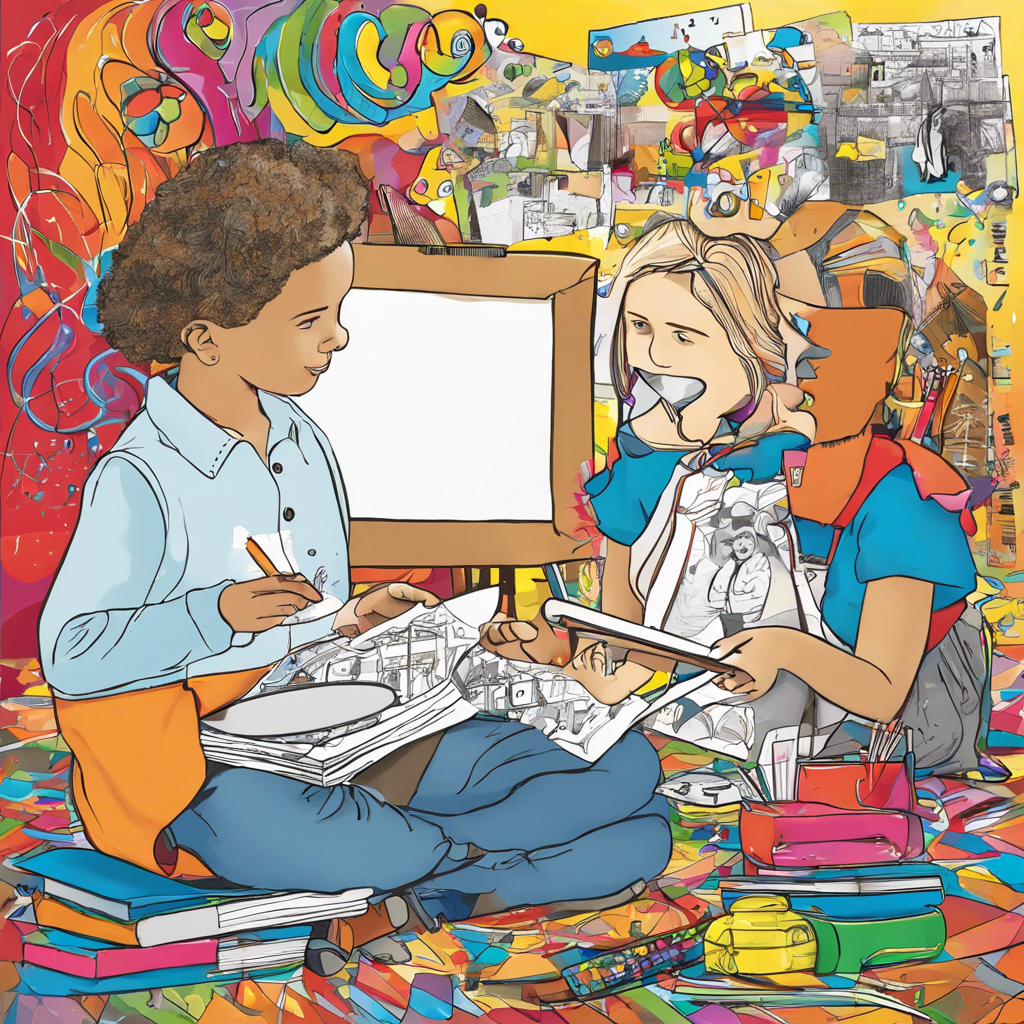Exploring the effects of integrating arts into education, fostering creativity, critical thinking, and social-emotional skills among students.
Arts integration is a powerful approach to education that seamlessly weaves artistic practices into traditional academic subjects. It’s not just about teaching art as a separate discipline but about using the arts as a vehicle to enhance learning across the curriculum. This innovative methodology has been shown to have a profound impact on **student creativity**, critical thinking, and social-emotional development, making it an essential component of a well-rounded education.
Unleashing Creativity through Arts Integration
Integrating the arts across subjects can have a transformative effect on students’ creative abilities. When students are encouraged to express their understanding of academic concepts through artistic mediums, they develop a **broader range of creative skills**.
Research suggests that arts-integrated education can foster a more well-rounded approach to creativity, where students learn to think both analytically and creatively. For instance, a student studying geometry might create a collage that represents the geometric principles they’ve learned, thereby applying mathematical concepts in a visually creative way.
Enhancing Critical Thinking and Problem-Solving
The arts provide a unique lens through which students can explore complex ideas and develop critical thinking skills. When learners engage in artistic activities, they often face challenges that require them to think critically and devise innovative solutions.
A Creative Problem-Solving Approach
A creative problem-solving approach is a cornerstone of arts integration. Students are encouraged to approach tasks with an open mind, consider multiple perspectives, and devise unique solutions. Whether it’s improvising in drama, experimenting with different musical arrangements, or drafting sketches for a painting, learners are continuously exercising their problem-solving muscles.
Developing Critical Thinking Skills
Arts integration also fosters the development of critical thinking skills. Students learn to analyze and evaluate artistic works, which encourages them to think deeply about the choices artists make. This analytical skill translates into other subject areas, helping students become more thoughtful and discerning learners.
Unleashing the Power of Questioning
Arts integration often involves open-ended questions that stimulate higher-order thinking. When students are asked to reflect on their artistic processes or interpret the work of others, they learn to form and defend their opinions. This **inquiry-based learning** approach fosters a culture of questioning and critical analysis, which can significantly enhance their overall learning experience.
Promoting Social-Emotional Learning
Arts integration also plays a crucial role in social-emotional development. Through collaborative artistic endeavors, students learn to respect and appreciate diverse viewpoints and talents. They develop empathy as they interpret and respond to the emotions conveyed through art.
Building Confidence and Self-Expression
The arts provide a safe and supportive environment for students to express themselves. Whether it’s through dance, drama, music, or visual arts, learners can explore their feelings, develop a sense of self, and build confidence in their unique abilities. This process of self-expression and self-discovery is a vital aspect of social-emotional learning.
Frequently Asked Questions
How does arts integration benefit students with different learning styles?
Arts integration accommodates diverse learning styles, providing visual, auditory, and kinesthetic learners with multiple entry points to engage with academic content. This multi-modal approach ensures that all students can access and process information in ways that resonate with their learning preferences.
What are some practical ways to integrate arts into subjects like math or science?
In math, students can create geometric artwork or design patterns to understand symmetry and shapes. In science, learners can use drama to act out ecological processes or create musical compositions inspired by natural phenomena. These methods not only make learning more engaging but also help students understand abstract concepts more concretely.
How does arts integration impact students’ social skills and emotional intelligence?
Arts integration facilitates collaboration, encouraging students to work together on artistic projects. This collaborative environment fosters empathy, respect for others’ ideas, and the ability to communicate effectively. Moreover, interpreting and creating art helps students recognize and express their emotions, contributing to their emotional intelligence.
Conclusion
Arts integration is a powerful tool for educators to unlock students’ creative potential, enhance critical thinking, and nurture social-emotional growth. By merging artistic practices with academic subjects, educators provide learners with diverse avenues for expression and understanding. The result is a more engaging, personalized learning experience that equips students with skills and perspectives that will serve them well throughout their lives.
## External Links and Anchor Texts:
1. Edutopia: The Benefits of Integrating Arts in Learning
2. Edutopia: Unlocking the Creative Brain
3. Edutopia: The Art of Creative Collaboration
